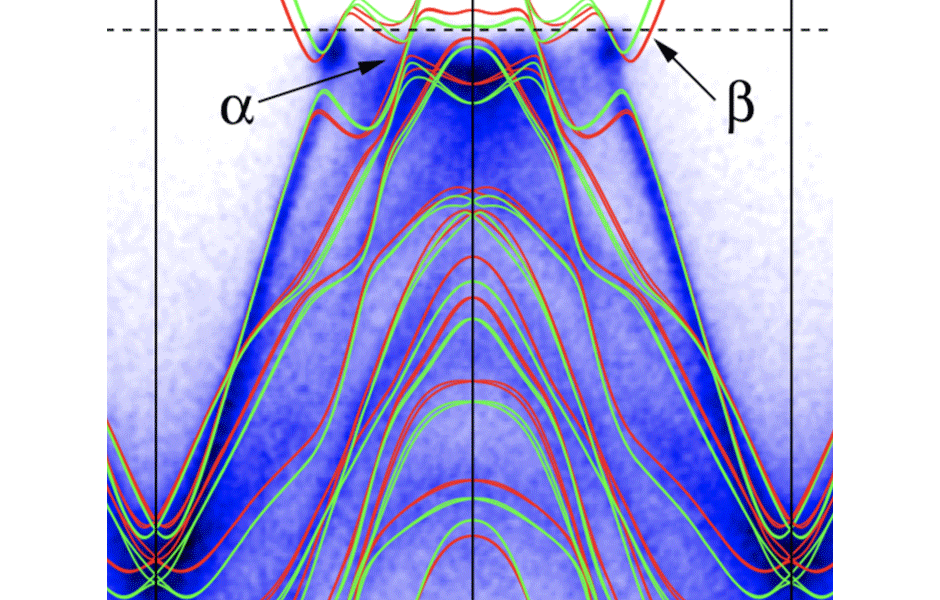Spectroscopy
XPS/ARPES

Synchrotron-based x-ray photoelectron spectroscopy (XPS) has many advantages over lab-based XPS, a common technique for analysing the surface chemistry of samples.
XPS is element-specific and can be used to track changes in the chemistry of elements that are very close to the surface, typically within a couple of nanometers. The spectral resolution of synchrotron-based XPS is significantly better than that of laboratory sources allowing chemically similar phases to be separated. The wavelength of synchrotron x-rays can be continuously tuned to change the penetration depth of the beam and profile different layers near the surface.
Angle-resolved photoelectron spectroscopy (ARPES) is a novel experimental technique to explore momentum-resolved electronic structure characteristics that are inaccessible with any other experimental method. ARPES at the Swiss Light Source is presently the most advanced worldwide in terms of energy resolution and detection efficiency.
The large probing depth and element specific measurements of ARPES enables Fermi surface, band structure, electron and lattice correlations to be characterised in bulk, heterostructure and diluted impurity-based quantum materials. These materials and devices are at the heart of solid-state quantum technology employing transistors, switching elements and qubits.
APPLICATION SECTORS
Energy
Advanced materials
Environment & climate science
Chemistry
